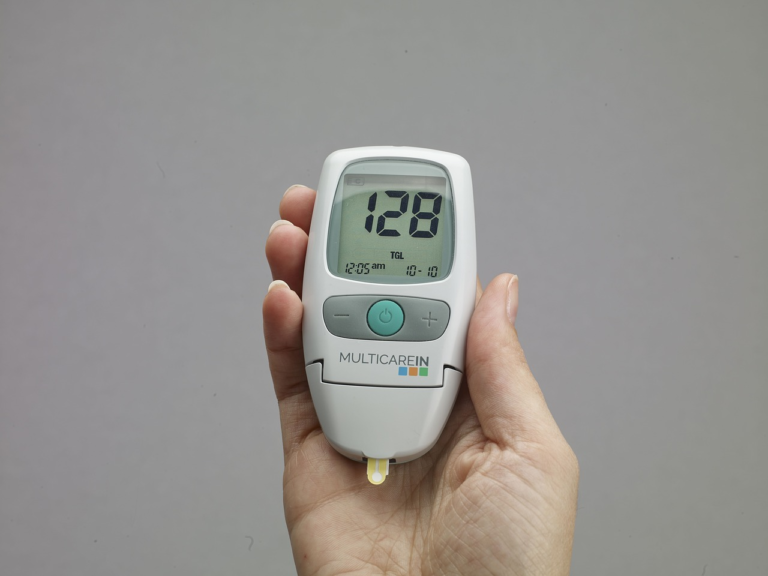The Impact of Smoking on Diabetics – Why Its Important to Quit Now
#ez-toc-container {
background: #f9f9f9;
border: 1px solid #aaa;
border-radius: 4px;
-webkit-box-shadow: 0 1px 1px rgba(0, 0, 0, .05);
box-shadow: 0 1px 1px rgba(0, 0, 0, .05);
display: table;
margin-bottom: 1em;
padding: 10px 20px 10px 10px;
position: relative;
width: auto;
}
.ez-toc-container-direction {
direction: ltr;
}
.ez-toc-list-level-1 a{
font-weight:bold;
}
Table of Contents
1. Introduction to Smoking and Diabetes
Introduction to Smoking and Diabetes
The intersection of smoking and diabetes presents a pressing health challenge that continues to affect millions of individuals globally. Both conditions on their own can significantly impair health, but together, they pose even greater risks. Understanding the relationship between smoking and diabetes is crucial for medical professionals, patients, and the general public alike to mitigate these combined threats. This understanding can lead to more targeted interventions and enhance public health strategies.
Overview of the Relationship Between Smoking and Diabetes
Smoking is a well-established risk factor for numerous health complications, including cardiovascular diseases, respiratory issues, and various forms of cancer. When combined with diabetes, the dangers compound, making management of either condition more complicated. Tobacco smoke contains numerous chemicals that can exacerbate the complications associated with diabetes, such as reduced blood flow, leading to a higher risk of developing gangrene and potential amputations.
Research indicates that smokers are more likely to develop type 2 diabetes compared to non-smokers. The chemicals in cigarettes can cause inflammation and oxidative stress, which are harmful to cells and tissues. Moreover, smoking can affect the body’s ability to use insulin effectively, making it challenging to maintain blood glucose levels within a healthy range. For people already diagnosed with diabetes, smoking can further aggravate their condition, leading to poorer control over blood sugar levels and increasing the likelihood of severe complications.
- The toxic substances in cigarette smoke can directly damage beta cells in the pancreas, which are responsible for insulin production.
- Smoking can elevate blood sugar levels, leading to insulin resistance.
- The habit increases the risk of abdominal obesity—a risk factor for developing type 2 diabetes.
Moreover, quitting smoking can lead to better blood sugar control, reduced risk of heart disease, and overall enhancement of health outcomes for diabetic patients.
Brief Statistics on Smoking Rates Among Diabetics
Understanding the prevalence of smoking among individuals with diabetes sheds light on the magnitude of this dual health concern. Various studies across different populations have estimated these figures:
- Approximately 20% of people with diabetes are active smokers when looking at global statistics.
- In the United States, it’s estimated that about 17% of the diabetic population are smokers.
- Heavy smoking is particularly prevalent among younger adults with diabetes, posing significant future health risks.
These statistics highlight the importance of targeted smoking cessation programs aimed at diabetes patients, emphasizing the specific dangers and offering tailored support. The dual prevalence suggests an urgent need for healthcare providers to address smoking in diabetes management plans actively.
Importance of Addressing This Dual Health Concern
Addressing the combined threat of smoking and diabetes is crucial for improving patients’ quality of life and reducing the healthcare burden. Fortunately, steps can be taken to mitigate these effects:
- Education and Awareness: Patients should be made aware of the specific risks associated with smoking and diabetes, emphasizing the benefits of quitting.
- Behavioral Interventions: Tailored smoking cessation programs that are sensitive to the challenges faced by individuals with diabetes can provide more effective support and outcomes.
- Medical Support: Healthcare providers should integrate smoking cessation as a key component of diabetes care plans, including the potential use of medications to assist quitting.
- Community Support: Social support groups can play a significant role in providing encouragement and accountability for those attempting to quit smoking.
By addressing smoking in the context of diabetes care, the risks of complications such as heart disease, stroke, and renal failure can be significantly reduced. This dual approach is essential not only for individual health but also for relieving the burden on healthcare systems.
In conclusion, the interaction between smoking and diabetes is a profound health concern that necessitates comprehensive efforts at all levels of care. Through education, intervention, and support, it’s possible to tackle these intertwined issues, leading to healthier outcomes for those affected by both smoking and diabetes.

2. The Physiological Impact of Smoking on Diabetics
Smoking is a leading cause of numerous health problems globally, and its impact is even more profound on individuals with diabetes. The interaction between smoking and diabetes can exacerbate the health complications associated with both conditions, leading to severe and sometimes life-threatening outcomes.
In this segment, we explore the physiological impact of smoking on diabetics, with a focus on how smoking exacerbates diabetes complications, the increased risk of cardiovascular diseases, and smoking’s effect on insulin resistance.
The Compounding Effect of Smoking on Diabetes
Diabetes, a chronic condition characterized by impaired insulin function and high blood sugar levels, already predisposes individuals to a host of complications. When smoking is added to the mix, the resultant health risks can multiply dramatically. Here’s a closer look at what happens:
- Increased Blood Sugar Levels: Smoking can lead to elevated blood glucose levels, making it difficult for diabetics to manage their condition effectively. The nicotine in cigarettes prompts the liver to release glucose into the blood, further complicating blood sugar control.
- Exacerbation of Diabetic Neuropathy: Diabetic neuropathy, which involves damage to nerves due to high blood glucose levels, can be worsened by smoking. Smoking narrows blood vessels, further reducing blood flow to nerves and intensifying nerve pain and damage.
- Delayed Wound Healing: Both smoking and diabetes individually impair the body’s ability to heal wounds, and together, they significantly undermine the healing process. This is particularly concerning for foot ulcers in diabetics, which can lead to infections and even amputations.
Increased Risk of Cardiovascular Diseases
Cardiovascular diseases are a leading cause of morbidity and mortality among diabetics. Smoking introduces additional risks that compound the likelihood of developing heart-related issues.
- Atherosclerosis: Smoking accelerates the buildup of plaque within the arteries, a condition known as atherosclerosis. This occurs as chemicals in cigarettes damage the lining of the arteries, promoting cholesterol accumulation and narrowing the arterial walls.
- Hypertension: The risk of high blood pressure is significantly greater in smokers. The constriction of blood vessels due to the nicotine content increases blood pressure, furthering the risk of stroke and heart attack among diabetic individuals.
- Coronary Artery Disease: Diabetic smokers are at a heightened risk of developing coronary artery disease. The combination of smoking and diabetes accelerates the progression of arterial blockages, restricting blood flow to the heart and leading to severe complications like myocardial infarction.
The Effect of Smoking on Insulin Resistance
One of the key challenges in managing diabetes is the regulation of insulin, a vital hormone in controlling blood sugar levels. Smoking has a direct influence on insulin resistance, making diabetes management even more challenging.
- Increased Insulin Resistance: Research suggests that smoking contributes to the development of insulin resistance, a condition where the body’s cells lose responsiveness to insulin, causing elevated blood glucose levels.
- Impaired Insulin Signaling: The toxic chemicals in cigarette smoke can interfere with insulin signaling pathways, disrupting glucose uptake and utilization by cells, thereby worsening glucose tolerance.
- Impact on Pancreatic Function: Smoking can also affect pancreatic beta cells, which are responsible for producing insulin. The oxidative stress and inflammation induced by smoking can impair beta cell function, potentially leading to reduced insulin secretion.
Overall, the detrimental effects of smoking on individuals with diabetes cannot be overstated. Quitting smoking is one of the most critical steps diabetics can take to improve their health outcomes. Smoking cessation not only helps in better managing blood sugar levels but also reduces the risk of diabetes-related complications and contributes to overall cardiovascular health.
Awareness and education about the compounded risks smoking poses to diabetics are crucial. Healthcare professionals should prioritize smoking cessation initiatives and support plans for diabetic patients. Ultimately, a smoker’s journey to quitting can lead to significant health benefits, reinforcing the management of diabetes and preventing the onset of severe complications.

3. Health Benefits of Quitting Smoking for Diabetics
Quitting smoking can be a transformative decision, especially for individuals managing diabetes. The health improvements can be both immediate and long-lasting, bolstering diabetic management and enhancing overall well-being. This piece explores the profound health benefits of quitting smoking for diabetics, drawing from testimonials and case studies that illustrate real-world successes.
Immediate Health Improvements Upon Cessation
Upon quitting smoking, diabetics can experience several immediate health benefits. Just 20 minutes after quitting, the body starts to repair itself, heralding improvements in both health outcomes and quality of life.
- Improved Circulation: Smoking causes blood vessels to constrict, leading to poor circulation, especially in extremities. Quitting smoking helps improve blood flow, reducing the risk of complications like neuropathy.
- Better Insulin Sensitivity: Smoking contributes to insulin resistance, a challenge for diabetics. Upon cessation, the body becomes more receptive to insulin, aiding in better blood sugar control.
- Enhanced Lung Function: Within days, lung function begins to improve, which means better oxygenation of blood. This improvement supports heart health, crucial for those with diabetes.
- Reduced Carbon Monoxide Levels: The level of carbon monoxide in the blood drops significantly, allowing for more oxygen transport—a vital step for healing and tissue repair.
These immediate changes set the stage for ongoing and long-term health improvements, facilitating better diabetes management.
Long-term Benefits for Diabetic Management and Overall Health
Quitting smoking not only initiates immediate benefits but also contributes to comprehensive health improvements over time. Here are some key long-term benefits:
- Decreased Risk of Cardiovascular Disease: Diabetics are at a heightened risk for heart disease. By quitting smoking, the risk significantly decreases, promoting a healthier heart.
- Improved Glycemic Control: Over time, those who quit smoking often find it easier to manage their blood sugar levels, which lessens the likelihood of diabetes-related complications.
- Lowered Risk of Retinopathy: Smoking accelerates diabetic retinopathy. Ceasing smoking helps protect eyes by mitigating this risk.
- Better Kidney Health: Smoking compromises renal function. Long-term cessation helps preserve kidney health, a crucial factor for diabetics.
- Reduced Risk of Amputations: Improved circulation and vasculature health reduce the risk of infections and amputations—a serious risk for diabetics who smoke.
These long-term benefits underscore the importance of quitting smoking for those managing diabetes and seeking sustainably better health outcomes.
Testimonials and Case Studies of Improved Diabetic Health After Quitting
Real-world experiences provide compelling evidence of the benefits of quitting smoking for diabetics. Here are a few powerful testimonials and case studies:
- “John, aged 55, decided to quit smoking after managing diabetes for over a decade. Within a month, he noticed improved energy levels and better blood sugar readings. Over the first year, his A1C levels were consistently in the target range, something he struggled with for years while smoking.”
- “Maria, age 42, shared that quitting smoking was the best decision she made for her health. Post cessation, she experienced a remarkable decrease in diabetic nerve pain and found it easier to maintain a balanced diet. Her doctor noted significant improvements in her overall health markers.”
- “A case study of 200 diabetic ex-smokers revealed striking outcomes: 70% reported enhanced glycemic control, while 60% experienced fewer hospital visits related to diabetic complications.”
These testimonials reflect a consistent theme—quitting smoking can dramatically improve the management and quality of life for diabetics.
In conclusion, the health benefits of quitting smoking are substantial for individuals living with diabetes. From immediate physiological improvements to lasting diabetic management benefits, the decision to quit smoking facilitates a healthier lifestyle and potentially adds years to one’s life. Real-life stories further illuminate the transformative potential of quitting smoking, offering hope and motivation for those ready to improve their health and well-being.
4. Strategies and Resources for Quitting Smoking
Quitting smoking is a crucial step for maintaining overall health, especially for individuals with diabetes. The interplay between smoking and diabetes exacerbates health risks, making it imperative for diabetic individuals to stop smoking. In this segment, we will explore effective methods for quitting smoking tailored for diabetics, provide an overview of available support systems, and share tips for overcoming common challenges to maintain a smoke-free lifestyle. By implementing these strategies, diabetics can greatly reduce their risk of complications and improve their quality of life.
Effective Methods for Quitting Smoking for Diabetics
People with diabetes should consider several methods specifically designed to address both their addiction to nicotine and their unique health needs. Here are some effective strategies:
- Nicotine Replacement Therapy (NRT):
NRT products, such as patches, gum, lozenges, inhalers, or nasal sprays, can be effective tools in managing nicotine withdrawal. For diabetics, it’s important to consult with healthcare providers to ensure NRT is used safely.
- Prescription Medications:
Medications like bupropion and varenicline have proven effective in reducing withdrawal symptoms. Diabetics should carefully monitor their blood glucose levels when using these medications and stay in communication with their doctor.
- Counseling and Behavioral Therapy:
Cognitive-behavioral therapy (CBT) and motivational interviewing can help diabetics develop coping strategies and deal with triggers that could lead to a relapse.
- Digital Health Tools:
Mobile apps and online programs designed to assist smokers can provide support through monitoring progress, offering tips, and connecting with support communities.
Overview of Available Support Systems
Support systems play a crucial role in helping diabetic individuals quit smoking. Below, we discuss some of the medical and community resources available:
- Healthcare Providers:
Healthcare professionals including doctors, nurses, and diabetes educators can provide personalized quitting plans and adjust diabetes treatment plans accordingly.
- Smoking Cessation Programs:
Many hospitals and health centers offer specialized smoking cessation programs that cater to diabetics.
- Community Health Resources:
Local health departments often provide community-based support groups and quitlines, offering both emotional support and practical quitting strategies.
- Online Support Communities:
Forums and social media groups dedicated to smoking cessation can help individuals connect with others facing similar challenges, providing a sense of camaraderie and encouragement.
Tips for Overcoming Common Challenges and Maintaining a Smoke-Free Lifestyle
After committing to a smoke-free lifestyle, diabetics can face unique challenges. Here are some tips to overcome these obstacles and maintain their progress:
- Manage Blood Sugar Levels:
Quitting smoking can lead to changes in blood sugar levels. It’s important for diabetics to monitor their blood glucose closely and adjust their diabetes treatment plan with their healthcare provider’s assistance.
- Identify Smoking Triggers:
Common triggers include stress, social situations, and specific routines. Identifying these triggers allows for planning and developing strategies to avoid or address them.
- Adopt a Healthy Lifestyle:
Incorporating regular physical activity, a balanced diet, and proper rest can aid in reducing cravings and improving overall well-being.
- Build a Support System:
Enlist the help of family, friends, and support groups to provide encouragement and accountability during difficult times.
- Practice Stress Reduction Techniques:
Utilize methods such as yoga, meditation, or deep breathing exercises to cope with stress and reduce the urge to smoke.
- Reward Yourself:
Celebrate milestones and successes to reinforce positive behavior and motivate continued progress.
By utilizing these methods and resources, individuals with diabetes can successfully quit smoking and move towards a healthier future. It’s important to remember that quitting is a journey, and seeking professional help and support can make the process more manageable and successful.







